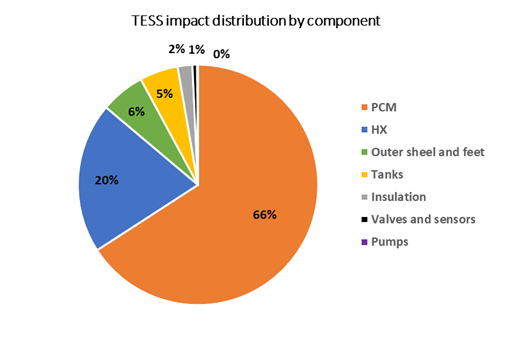The experimental testing campaigns for the prototypes are reaching final stage. The power cycle prototype, high temperature heat-pump prototype, high temperature thermal energy storage and isobaric expansion engine pump prototypes are being tested in variety of environments and parameters to ensure optimal results of CHEST technology, once it is assembled.
POWER CYCLE PROTOTYPE, GHENT UNIVERSITY
The experimental testing campaign of the Power Cycle Prototype has been finished in November 2020. A total of 58 steady state points has been tested with varying heat source temperature, cold sink temperature, Organic Rankine Cycle (ORC) pump and expander speed, as well as a varying valve timing for the expander.
In the current state, a maximum electrical power output of 8.2 kWe has been achieved. However, currently modifications and improvements are being made to even increase this power output once integrated in DLR’s laboratory.
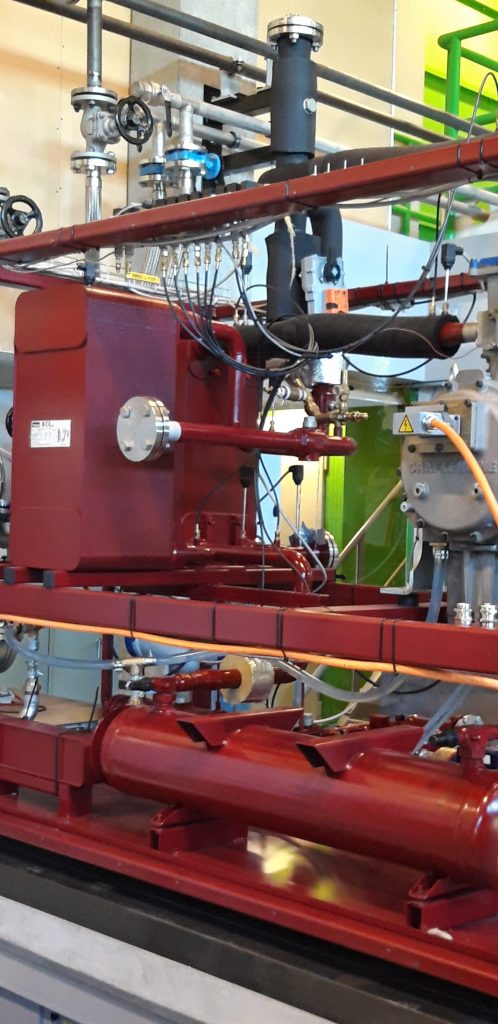
Ghent University is also analyzing the obtained results and validating a simulation model. This research will be used to finish the performance mapping of the prototype. The simulation model will include the effects of having an extra degree of freedom, the variable built in volume ratio of the expander. In the end, the performance map will be used to estimate the output of an upscaled system.
Ghent University is also dealing with the optimization of the control loop and preparing the prototype to be shipped to DLR’s laboratories in Stuttgart, Germany. DLR will be assembling all three prototypes to build the CHEST technology very soon.
THE ISOBARIC EXPANSION ENGINE-PUMP, ECT
The innovative low-grade heat driven engine-pump developed by ECT, also known as isobaric expansion (IE) engine, has been constructed and successfully tested. The engine-pump was tested under operating conditions corresponding to the high-pressure pump of the CHEST ORC system.
The experimental results are very promising. All the components run as expected. The prototype is capable to pump any liquids at pressure difference of 10-20 bar and flow rate of 10-30 l/min (mechanical power up to 1 kW) using heat source with temperature in the range of 80-85oC. During the testing phase, all the system components were investigated and adjusted; some of the engine parts were re-machined, some of the seals were replaced with more reliable ones.
Refrigerant R134a was used as working fluid of the prototype. Low-grade heat supply to the system with a thermal input up to 20 kW was provided with hot water with a temperature of up to 90 oC. Tap water was used as a heat sink.
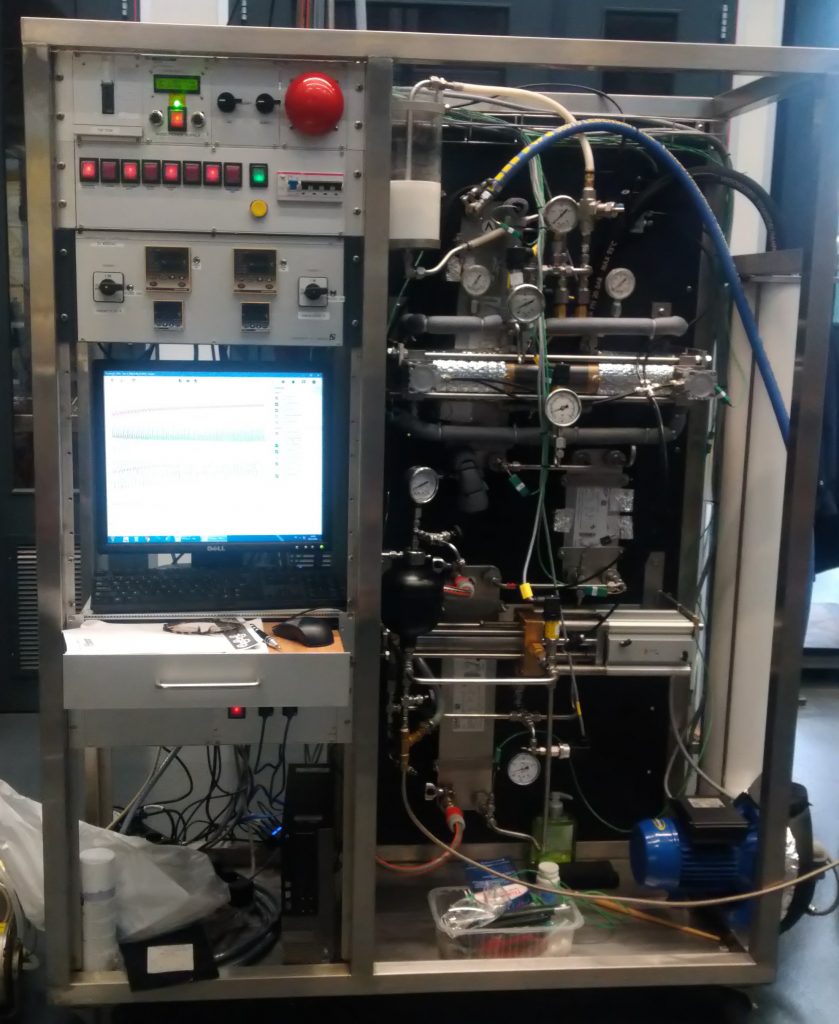
An application of the IE engine-pump instead of high-pressure pump of the ORC unit will permit to increase the roundtrip efficiency of the CHEST system as no electricity will be consumed by the pump.
Based on the results obtained, the new IE engine can convert any other available renewable heat sources with temperatures below 100 °C into electricity within the various possible modifications of the CHEST technology.
As a next step, ECT plans to further evaluate the engine-pump in the long term runs under varying loads using new components developed from the knowledge gained from the first phase of testing.
To use the engine-pump for shaft power/electricity generation the design of pumping part will be changed to provide the pressure difference up to 50-80 bar. Afterwards the engine will be coupled with a hydraulic motor and electric alternator combined with a proper load.
HIGH TEMPERATURE HEAT PUMP PROTOTYPE, TECNALIA
The High temperature heat pump (HTHP) has been successfully commissioned, experimentally tested and the data was analysed. During the commissioning phase, all mechanical and electrical systems were tested and adjusted for the experimental work.
The experimental campaign was delivered at the Thermal Energy testing facilities of TECNALIA in San Sebastian, Spain. The HTHP was tested by using the laboratory water loops under the range of conditions based on the CHEST system requirements.
In the sink side a water-to-refrigerant heat exchanger substituted the LH-TES of DLR´s laboratory. The temperatures reached in the sink side reached values between 133 to 145 °C, under heat source temperatures between 70 to 100 °C. The performance of the HTHP was also investigated under different subcooling temperatures and compressor speeds.
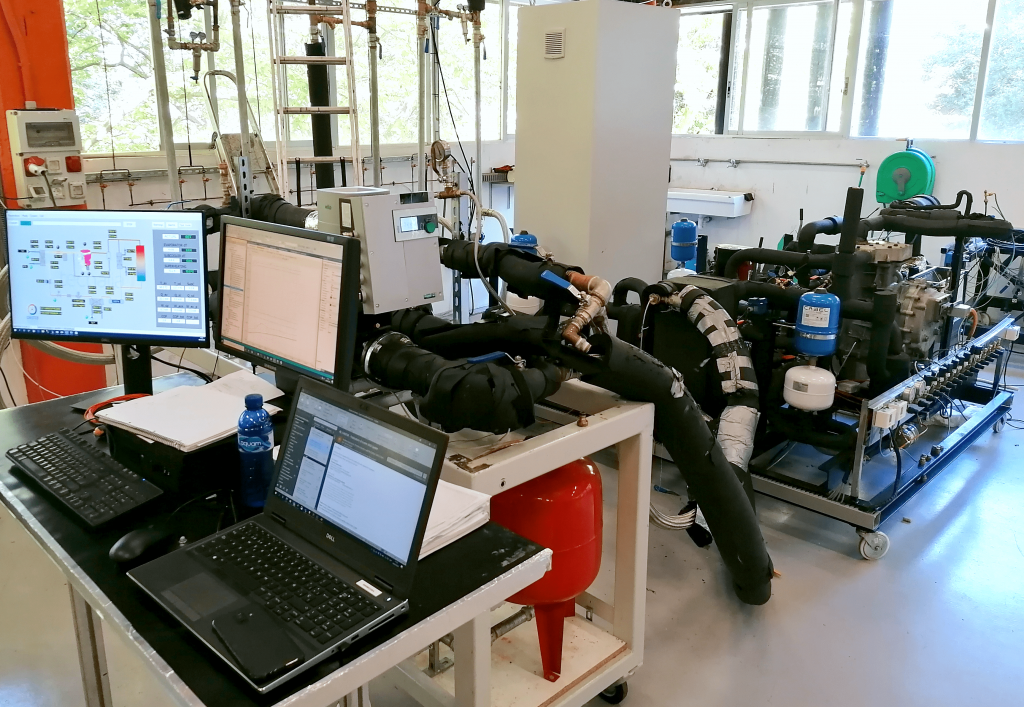
The analysed results showed that the HTHP is capable to operate as required under the CHEST operating conditions. The main components behaved correctly, and the customizations implemented improved the reliability of the system. Further adjustments to the control of the HTHP were also defined showing great improvements in terms of performance and safe operation. The performance of the HTHP reached COP values between 3.5 and 6.9, for heating power up to 40 kW.
As a next step, TECNALIA will detach the HTHP from the laboratory. This process includes safe recovery of working fluids, disconnect the prototype from TECNALIA´s facilities and improve the framing for transportation. The shipping of the HTHP to DLR laboratory is expected for January 2021.
HIGH TEMPRATURE THERMAL ENERGY STORAGE PROTOTYPE, DLR
The latent heat thermal energy storage (LH-TES) unit was delivered to the DLR site in mid-October, following delays due to COVID-19. This was followed by the assembly of the LH-TES unit in the laboratory. Together with the sensible heat storage (SH-TES) tanks, both parts of the high temperature storage system (HT-TESS) prototype are now available. The piping between the LH-TES unit and the organic steam generator is currently being installed and the measurement and control equipment for the performance tests are in preparation.
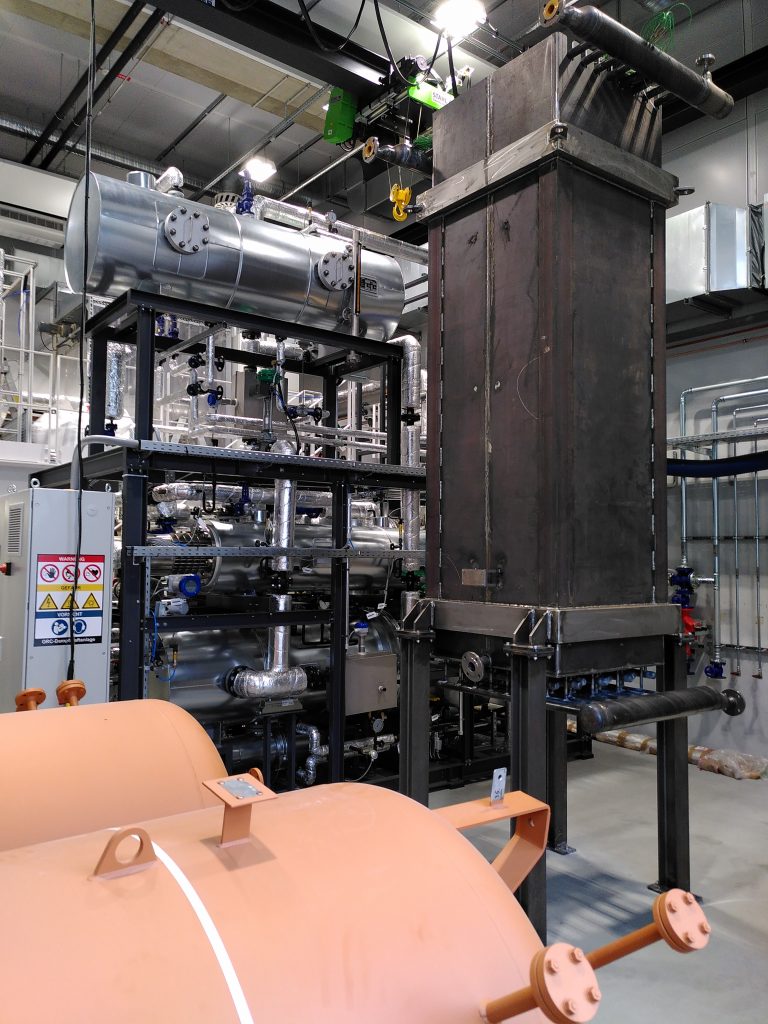
After integration and successful commissioning of the testing arrangement, the LH-TES unit will be filled with the storage material, a phase change material (PCM) that is a eutectic of LiNO3 and KNO3 with a melting temperature at approx. 133 °C. This is a process in which a batch of PCM is filled into the storage unit, melted and cooled down again in several consecutive steps. Thereafter, the charge and discharge characteristics of the LH-TES will be analyzed based on the defined test matrix. This testing is expected to be finished by March 2021 and can be conducted in parallel with the ORC and heat pump installation at DLR’s lab.


